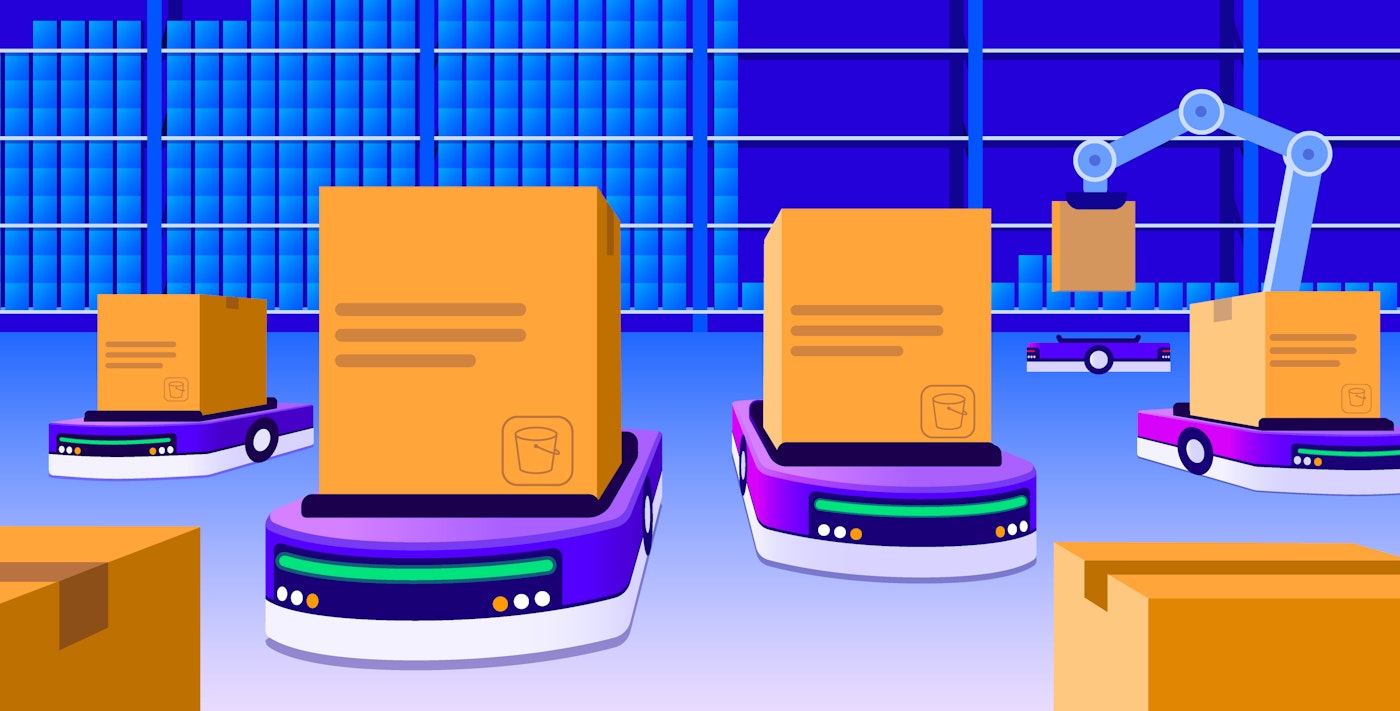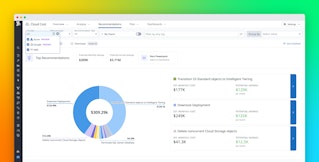
Qasim Jamal

Maxim Briskin

Patrick Krieger
In collecting and analyzing trillions of events each day, Datadog ingests a massive amount of data. We spend substantially to process and store this data in the cloud, and teams across the organization are committed to optimizing the return on this investment. To this end, our FinOps analysts have always tracked the costs of delivering our services and identified opportunities for savings. They use this information to partner with engineering teams who then seek to improve the cost efficiency of their services and realize those savings.
But these partnerships can falter when teams work in separate environments that don’t provide a consistent, unified view into the relevant cost data. For example, a finance team’s cost data spreadsheets aren’t useful to engineers. We built Datadog Cloud Cost Management (CCM) to solve this problem. CCM provides centralized visibility into cost data so that FinOps, engineering, and stakeholders throughout the organization can actively monitor and manage cloud costs. It also surfaces cost data where engineers work day to day so that they can own and optimize costs with the same discipline they apply to their services’ performance, reliability, and security.
In this post, we’ll share how one of our cost optimization initiatives, powered by CCM, brought us surprising success. In the first quarter of 2025, our FinOps team identified a storage cost optimization and collaborated with engineers to implement it. Once the collaboration began, the engineering team discovered further opportunities for cost savings that were even greater than those proposed by FinOps. The associated cost optimizations we implemented will save us an estimated $1.5 million annually. Additionally, we customized CCM to help identify further opportunities for cost efficiency and enable even greater savings.
Spotting inefficient costs with CCM
One recent initiative illustrates how Datadog benefits from this process. To begin, FinOps set out to optimize the storage costs incurred by one of the services supporting the Datadog platform. In this case, CCM’s Cloud Cost Recommendations suggested migrating Amazon S3 objects from Standard storage to the more cost-efficient S3 Intelligent-Tiering class.

With this recommendation in hand, FinOps analysts approached the engineering team to collaborate on a plan for cost savings. This type of collaboration is facilitated by the consistent tagging of our cloud cost data, which enables teams to allocate cloud costs and analyze them across any tagged dimensions such as teams, services, or environments. The tagging made it easy for the FinOps team to identify the engineering team whose storage costs they wanted to optimize.
Using Datadog Notebooks for collaboration
FinOps compiled the relevant data into a collaborative workspace by using Datadog Notebooks, which combines live graphs, recommendations, and performance data with text and images. The shared notebook illustrated the cost inefficiency and conveyed the initial hypothesis that centered on the storage classes used by the service.
The notebook also provided a starting point for the engineering team to implement the recommendation. It included step-by-step instructions that engineers could follow for assigning the most cost-optimal storage class to their service. And it helped them verify savings by tracking cost changes resulting from their optimizations, which in turn made it easy to watch for any unexpected regressions.
Digging deeper to find more savings
FinOps analysts at Datadog use CCM for a broad view of cloud costs, but the product is just as powerful for engineers, who combine deep knowledge of their services with CCM’s cost data. This cost data empowers engineers to pursue independent, and in some cases deeper, investigations into the costs of running their own services.
Leading up to this particular episode, the engineering team involved in the storage cost investigation had primarily focused on performance and reliability, but not cost. They didn’t regularly review the costs incurred by their service, and they believed their S3 use was already highly efficient. When the FinOps team reached out with the identified inefficiency and a recommended solution, the engineers implemented the recommendation. But more significantly, the recommendation sparked the engineers’ interest in finding out more.
Uncovering a second cost-saving opportunity
Inspired by the FinOps team’s cost investigation, the engineering team dug deeper and discovered an even bigger opportunity to optimize their service’s costs. By surfacing both cost data and storage usage in their service dashboards, engineers quickly discovered that the FinOps team’s initial hypothesis—that S3 storage classes accounted for the service’s cloud costs—wasn’t the full story. The engineers came up with a second hypothesis, which focused on the service’s use of object versioning, and asked the FinOps team to investigate.
The FinOps team investigated this new theory by visualizing the service’s cost data in the Cloud Cost Explorer. They confirmed that, indeed, the service’s primary cost driver was actually a large number of non-current object versions that S3 retained as a function of its versioning feature. Storage costs could thus be reduced by minimizing non-current versions.

Applying the fixes
After identifying the opportunities for cost saving with the FinOps team, the engineers created Jira tickets directly within CCM to assign and track the work required for the identified optimizations. This gave them visibility into the work to be done and the progress made as changes were implemented.
As part of these requested changes, and to reduce expenditures related to non-current object versions, the team implemented new S3 Lifecycle rules. These rules would automatically prevent wasteful storage costs by managing non-current object versions in the service’s buckets. This simple change by our engineering team will save an estimated $1.5 million annually, even though the opportunity wasn’t immediately apparent.
Beyond immediate cost optimizations, this collaboration between FinOps and engineering gave both teams steps forward to realize ongoing efficiencies. After the engineering team shared their findings with FinOps, FinOps created new Custom Recommendations based on those discoveries. The cost recommendation customizations the FinOps team implemented in this case automatically identify similar optimization opportunities across other teams. This enables us to apply what we learned in this investigation to more easily find wasted spend going forward.
Building trust and reducing cloud costs
In this post, we’ve described just one example of a successful, collaborative cloud cost optimization effort at Datadog. The initial hypothesis about S3 storage classes didn’t lead to the greatest impact, but it kicked off a deeper investigation that yielded significant savings. By putting actionable cost data into the hands of our engineering teams, we successfully identified and eliminated inefficiencies that allowed us to save $1.5 million annually on cloud storage.
More importantly, this episode exemplifies how we are building a culture of cost-consciousness across the company. When our FinOps team reaches out to partners in engineering, they can all collaborate around cost insights within the Datadog platform, where engineers already work. Transparent and trustworthy data enables engineering teams to own their costs and make efficiency a top priority—on par with performance, reliability, and security. To further increase our organization’s cloud cost awareness, teams share their cost-saving achievements as examples that motivate other teams to prioritize ongoing optimizations.
If you’re interested in learning more, see our blog posts about Datadog’s FinOps practice and how we’ve made other major cost optimizations. To get started with Cloud Cost Management, see the documentation. If you haven’t yet started using Datadog, you can sign up for a 14-day free trial.





